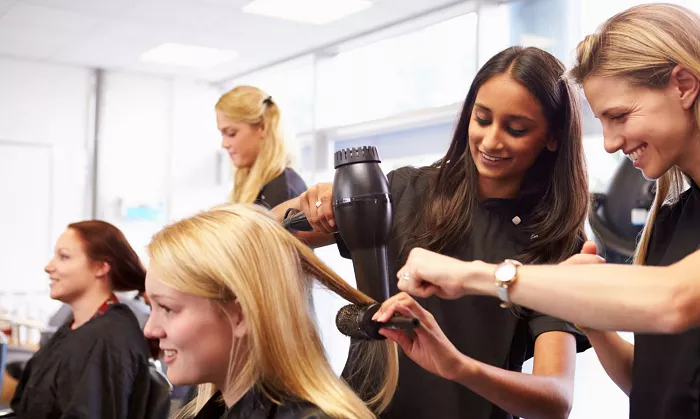The Covid-19 lockdowns, which forced hair salons to close for extended periods, have highlighted the value of professional hairdressers. However, salons across the UK are now warning of a looming staffing crisis as Generation Z turns away from careers in hairdressing.
Hairdressing apprenticeships have seen a staggering 70% decline in enrollment over the past decade, exacerbating an already troubling wave of salon closures. This trend signals longer waiting times for appointments as the industry faces significant staff shortages in the coming years.
Josh Wood, a renowned hair colourist and founder of a top West London salon, says the situation is becoming dire. “It’s almost impossible to find new stylists,” he explains. “Hairdressing is an amazing career that took me from a council estate in Barnsley to owning a successful business. But hiring new talent is becoming increasingly difficult as the pool of qualified candidates shrinks.”
The numbers are sobering. In England alone, the number of trainees entering hairdressing apprenticeships has plummeted from 13,180 in 2015 to just 4,160 in 2023, according to data from the Department for Education. The number of students completing their training dropped from 8,660 in 2015 to 1,520 in 2023.
“It’s a tragedy,” says Millie Kendall, chief executive of the British Beauty Council, which represents the UK’s £4.6 billion hair and beauty industry. “The UK is renowned globally for the quality of its hairdressing, but this recruitment crisis threatens that reputation.”
Industry experts point to the perception among young people that hairdressing is a low-paid profession as a key factor. Additionally, many school-leavers are opting for college courses instead of apprenticeships, but salon owners argue that on-the-job training is irreplaceable. Salon vacancies now take an average of 16 weeks to fill.
Salon closures add to the problem. While barbershops, nail bars, and beauty salons are thriving, the number of hair salons is falling. The Local Data Company reports that Great Britain lost 319 hair salons in the year leading up to July 2024, while more than 1,000 beauty salons and nail bars opened.
The pandemic dealt a severe financial blow to the UK hairdressing industry, and it has struggled to recover. Salons have been forced to raise prices, sometimes multiple times, but these increases haven’t kept pace with rising business costs such as energy and wages during the ongoing cost of living crisis.
Most salons are small businesses with just a few employees, and many feel there is little incentive to grow due to the so-called VAT “cliff edge.” Once a business reaches £90,000 in taxable turnover, it must charge VAT on sales, a shift that many salon owners believe can hurt their competitiveness, especially if nearby competitors are not VAT-registered.
To stay below this threshold, many salons, particularly those in less affluent areas, opt to remain small or rent out chairs to freelance stylists. This has prompted calls for the government to introduce a graduated VAT system to ease the financial burden on growing businesses.
“Salons are an integral part of our communities, offering not only essential services but also a space for social interaction and relief from the stresses of daily life,” says Caroline Larissey, chief executive of the National Hair and Beauty Federation, the industry’s largest trade association.
Larissey emphasizes the need to promote hair and beauty careers as viable options for young people. “As a nation, we need to respect the value of this sector—not just for its contribution to the economy, but for its role in enhancing the wellbeing of the country,” she adds.
The future of the UK’s hairdressing industry remains uncertain, but without new talent entering the profession, the challenges faced by salons could deepen.


